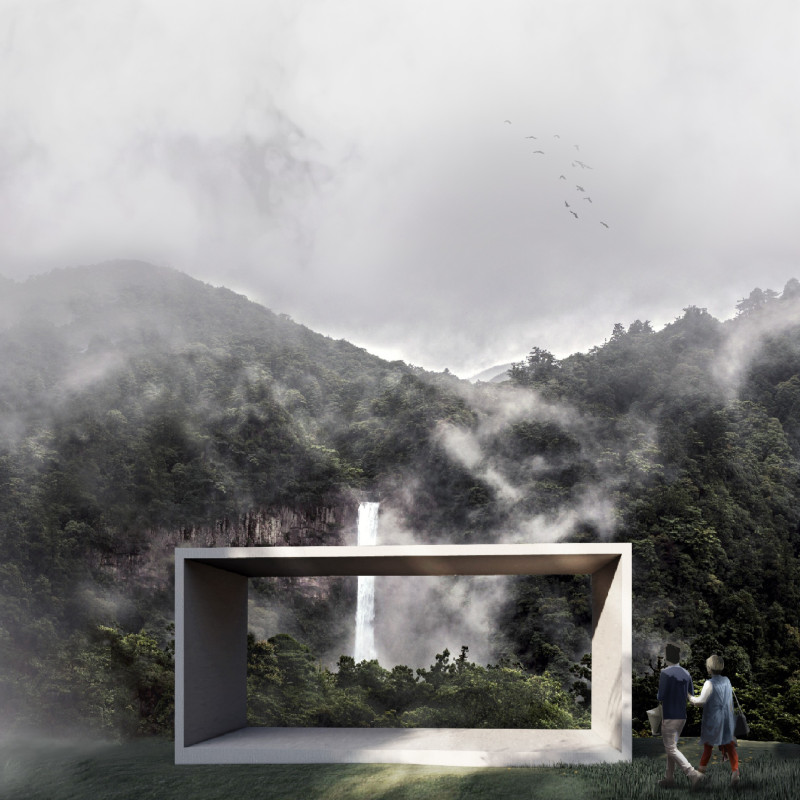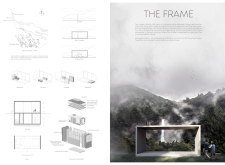5 key facts about this project
Located in Nachi-Katsuura, Japan, the project draws inspiration from its rich historical context, characterized by landmarks like Seiganto Temple and the beautiful Nachi Waterfall. The design aims to blend the built environment with nature, reflecting a thoughtful evolution of how people relate to their surroundings. The theme of a "framed painting" serves as an anchor, illustrating the idea that structures designed by people complement the artwork of the landscape.
Conceptual Framework
The design captures a modern perspective on coexistence with nature. It narrates a journey from fear and submission to nature, through a time of control, leading to present-day collaboration. By focusing on how architecture can work in partnership with the environment, the concept emphasizes harmony over dominance. This approach allows the surroundings to influence the design rather than letting the structure overpower them.
Spatial Organization
Inside, the layout is efficient, making use of just 25 square meters. The rooms function as separate yet interconnected spaces. Each area, including the bathroom, kitchen, storage, and bedroom, serves distinct purposes while remaining part of a larger whole. The design maximizes usability in a compact environment, ensuring comfort and ease of movement for its residents.
Materiality
Materials chosen for the structure reflect a commitment to sustainability and durability. Treated exterior plywood adds strength while maintaining a natural look. Straw bale insulation improves energy efficiency and provides effective thermal protection. The use of recycled steel underscores a focus on reducing waste, while wooden wall cladding enhances the exterior's tactile quality. Solar panels help the building utilize renewable energy, supporting a broader environmental agenda.
Design Detail
A notable feature involves large windows that frame the surrounding views, effectively connecting the indoor and outdoor worlds. This design choice invites natural light in, creating warm and inviting spaces. As the light changes throughout the day, it transforms the atmosphere inside, fostering a sense of closeness to the landscape beyond the walls. The interplay of light and nature enriches daily life within the structure.






















































